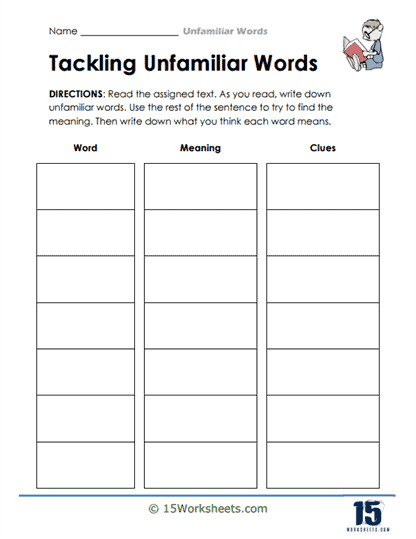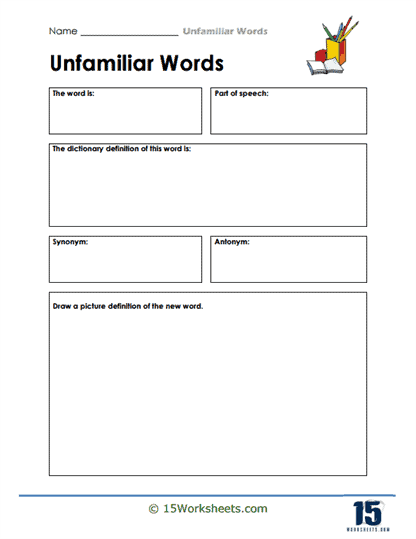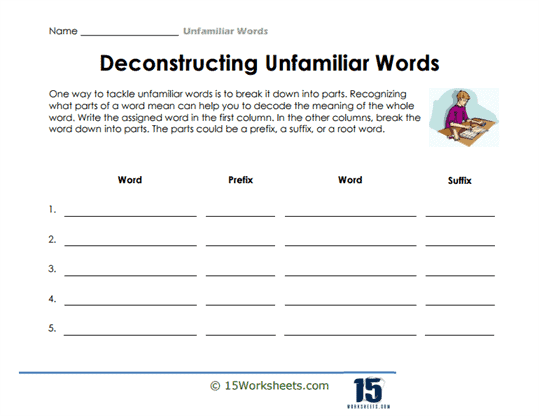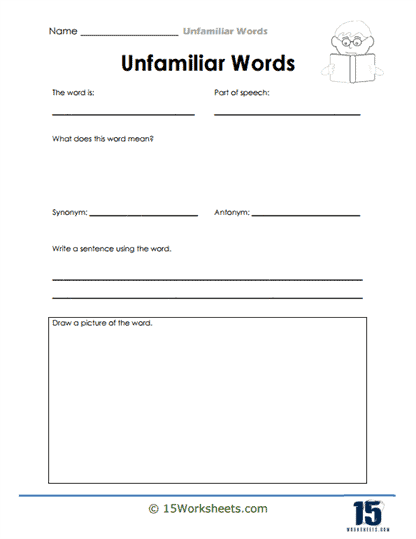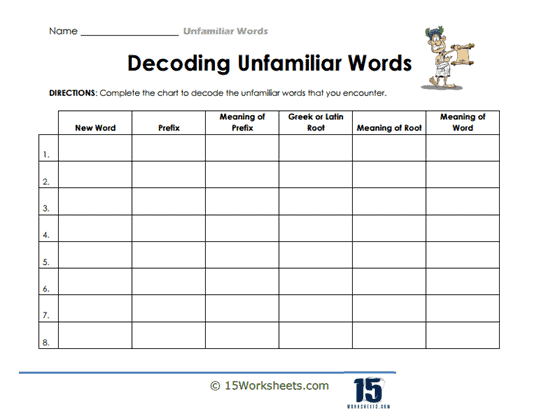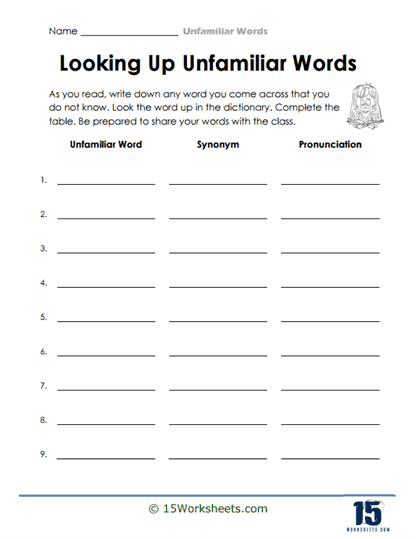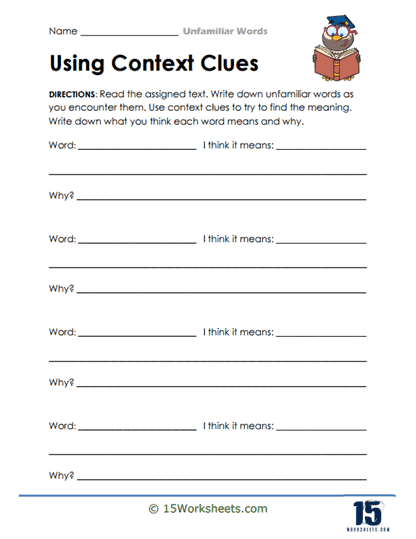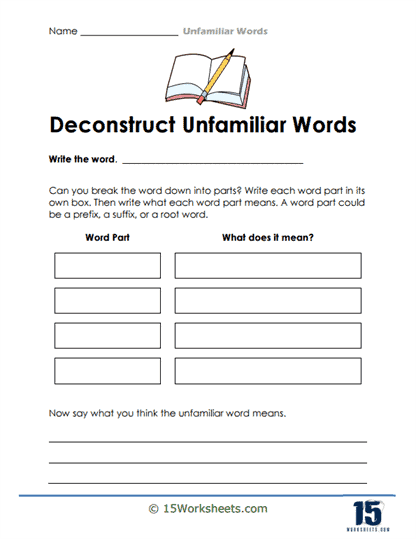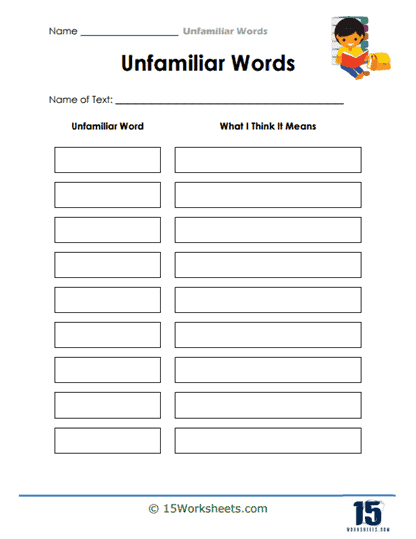Unfamiliar Words Worksheets
About These 15 Worksheets
Language is a fascinating tapestry of words and expressions, ever-evolving and expansive. Yet, every learner, at some point, confronts words that are unfamiliar, challenging, and even baffling. It could be in something they read, see in passing by, or even find on a TV show. At times, this can make us feel like we are hitting a wall when trying to better understand something. These worksheets will help students in navigating the uncharted territories of the linguistic world. These worksheets play a pivotal role in enhancing reading comprehension and writing prowess by expanding vocabulary and honing skills to decipher unfamiliar words.
These worksheets are not just rote lists of words and their definitions; they are designed to provide context, offer practice opportunities, and develop the skills necessary to deduce the meaning of unknown words. Essentially, they empower students to become independent word detectives.
Through varied exercises, they offer students the keys to unlock meanings, encouraging them to be curious, analytical, and independent in their linguistic journey. As students master the art of deciphering unfamiliar words, they’re not just adding to their vocabulary bank. They’re enhancing their reading fluency, bolstering their writing capabilities, and stepping into the world with the confidence to communicate and comprehend effectively.
Types of Exercises
Context Clues – These exercises present unfamiliar words within a sentence or a paragraph. Students must use surrounding information to infer the word’s meaning. For instance, “The arid landscape had not seen rain for months.” Here, even if “arid” is unfamiliar, the context hints at its meaning related to dryness.
Word Roots, Prefixes, and Suffixes – Recognizing common roots and affixes can help decipher many unfamiliar words. Exercises might ask students to match words with their roots or add appropriate prefixes/suffixes to base words.
Synonyms and Antonyms – Students may be presented with unfamiliar words and tasked with selecting synonyms or antonyms from a given list, based on the context or definition. These provide a word and several possible definitions. Students must select the correct definition based on context or prior knowledge.
Word Mapping – This involves creating a visual representation of the word, its definition, synonyms, antonyms, and an illustrative sentence. Students connect unfamiliar words to familiar ones based on meaning, context, or relationships.
Steps to Decoding and Tackling Unfamiliar Words
1. Try Saying It Out Loud – Say the word the best you can. Sometimes, you might remember hearing someone else say it.
2. Look Around the Word – Read the whole sentence with the new word. The other words can give you hints about what the new word means.
3. Look for Small Parts You Know – Some words have smaller parts, like “un-” or “-ing.” These can help you guess the word’s meaning.
4. Sound It Out – Use what you know about letter sounds to help you say the word. Do you know any words that have a similar pattern of letter arrangements.
5. Ask Someone – If you’re still unsure, ask someone like a teacher, friend, or family member about the word.
6. Picture It – Think of a picture in your mind that matches the word. You can even draw it to bring it to life for you.
7. Use It – Try to use the new word when you talk or write. This helps you remember it better.
8. Talk About It – Tell someone about the new word you learned. They might tell you more about it.
9. Keep a Word Book – Have a special notebook for new words. Write down the word, its meaning, and draw a picture or write a sentence with it.







